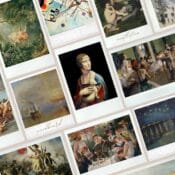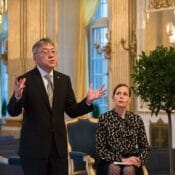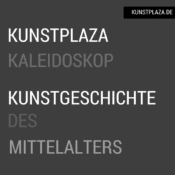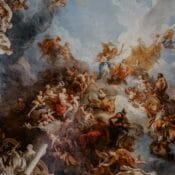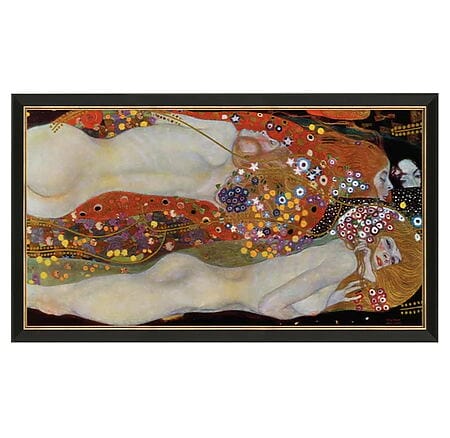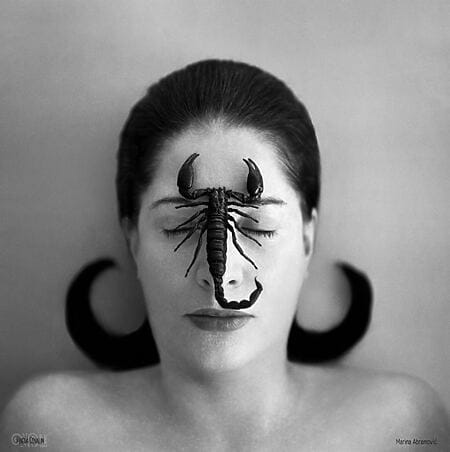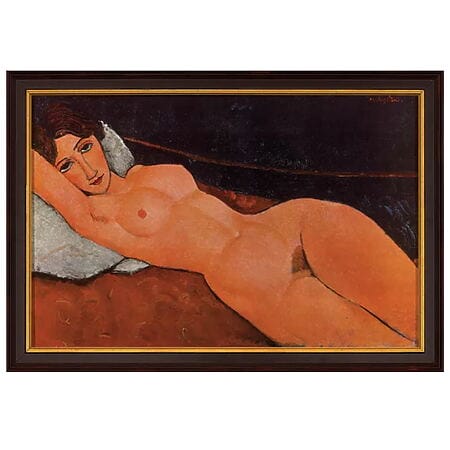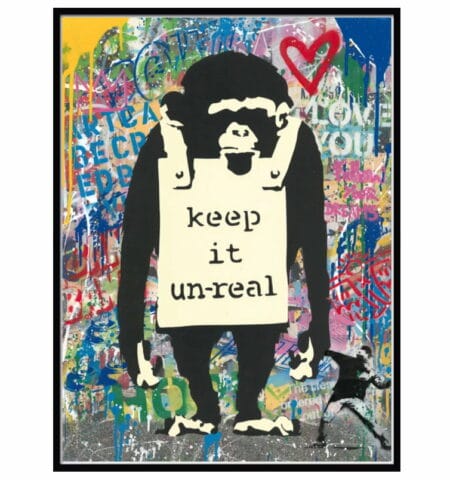Right at the beginning: literature in the crisis
We find ourselves in roughly the year 1000 , and the Germans had only been Germans for one or two generations (the name "Regnum Teutonicum" dates back to 920) when they began to add a little more flair to the rather unartistic beginnings of the German written language (translations from Latin, mostly laws or codes of conduct, and the first historical writings). The first works of linguistic art were born.
A few knights had already been innovative and, above all, wealthy enough to master the secrets of written expression, and they had immediately used this knowledge to record their own heroic deeds or to write to their beloved about their love, but these were really still very hesitant and rare beginnings.
In addition, the middle of the 9th century saw the first German literary crisis. The Frankish Empire collapsed under the descendants of Charlemagne, and a new dynasty (the Ottonians) had to fight for power. In this turmoil, everything that had previously been a tender seedling of the first German literature in monasteries and royal courts perished. The works of a solitary literary star, the monk Notker Labeo of St. Gallen , paled in comparison to a flood of pious, edifying literature.
But at least: We now became the Germans, the last ruler "Regnum Teutonicum" Henry II (973 - 978), also became the first Emperor of the Holy Roman Empire (of the German Nation, although this addition only came into use in the late 15th century) in 1014, and the German territory was defined.
Henry left behind a well-ordered empire. However, because his marriage to Empress Kunigunde remained childless, his death ended the reign of the Ottonians. A new ruler was needed, and in such a case, the new ruler was chosen through negotiations among the greats of the empire, and the Salian Conrad II prevailed.
He remained Holy Roman Emperor until 1039 and had little to offer that would have significantly advanced the literary scene of the time. Conrad II first had to justify why the Salian dynasty were actually "born kings." The ruler's "literary energy" was channeled primarily into writings written by his court historiographer, Wipo, to justify Conrad's kingship as quite different from that of his predecessor. Conrad had married a Carolingian woman and generally wanted to identify more with Charlemagne, who was considered the ideal ruler in the Middle Ages.
Konrad doesn't seem to have had much literary energy anyway. His father died early, and his mother barely cared for him. When he was handed over to a bishop for education at around the age of 10, it was probably too late to acquire the basics of education.
According to Wipo, Conrad couldn't even read. The (unknown) contemporary author of the Chronicle of Novalese described Conrad as an ignorant, clumsy man, inexperienced in all sciences—when a ruler is so uneducated, the people usually don't feel encouraged to produce literary output.
The cultural climate is getting better
Conrad II's successor in 1039 was Henry III, who received a very different upbringing than his father. Conrad provided his son with an excellent education, with two leading bishops of the empire and the historiographer Wipo recorded as his tutors. In this upbringing, learning, scholarship, and wisdom formed the fundamental principles of royal ethics; accordingly, Henry III was praised in eulogies and laudatory poems as a peace-loving ruler of a new era of harmony and peace.
The turbulent times became somewhat calmer, and the scent of learning permeated the country. This climate essentially remained intact under Henry IV (despite his dispute with the popes, which led to the pilgrimage to Canossa in 1077 and a subsequent period of anti-kings) and his successor, Henry V (Holy Roman-German King from 1106 and Holy Roman Emperor from 1111 to 1125).
Thus, from around 1050 onward, a great deal was happening in "German literature": the first early Middle High German rhyming couplets were presented by clergymen, the first salvation stories, such as the Ezzolied (1065) and legendary poems such as the Annolied (1077), were created. Narrative literature explained the Old and New Testaments in the vernacular, and in numerous Marian poems, the service to the Blessed Virgin and Mother of God was intended to help German-speaking readers attain eternal bliss.
Around the middle of the 12th century, a crucial change began: literature was more diverse, topics that had never been found to be worthy of written treatment or recording had been found - and thus wrote writings that were not only prescribed in the popular language, but also really interested the people.
At the same time, the forms of this early literature became considerably more diverse: courtly poetry and entertaining narratives in German emerged, as did historiography in German and secularly oriented poetry.
Even in the legend seals, the authors of the time had discovered a previously unthinkable interest in the individual, life stories were not only symbolically, but with a concrete personality focused on the focus - the German novel got its protagonist (the term itself is a bit older, it comes from the classic Greek tragedy and describes the actor of the first role).
As soon as there is German literature, there are also the first racers
Stories that were about real people and individual fates were also more interesting in the Middle Ages than legal texts or edifying writings on the exemplary behavior of a symbolic figure, the "first German novels" were enthusiastic:
In the Alexander Song, priest Lamprecht described the life and deeds of the ancient superstar Alexander the Great in memorable verses around 1150. Around 1170, Heinrich von Veldeke translated the legend of (Saint) Servatius into the vernacular. According to the legend, Servatius was able to warn the citizens of Tongeren of the Hunnic attack and thus save them because St. Peter had predicted this very Hunnic fall to him in a vision.
For particularly captivating subjects, several literary figures would come together to create a popular version: The Vision of Tnugdali, for example, was considered particularly exciting at the time. It tells of the visions of the wicked knight Tnugdali and how he is purified by life or an angel.
This very first "religious science fiction story" was translated into the vernacular in (at least) two versions: Sometime between 1160 and 1190, an unknown author created the Lower Rhine Tundalus, of which only fragments survive today. Probably in 1190, Priest Alber of Windberg Monastery translated his "Tundalus" into an impressive 2,200 Middle High German verses.
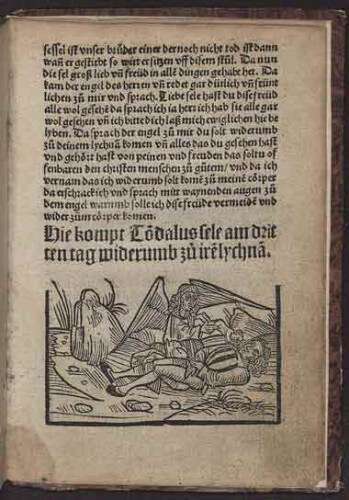
Public domain, via Wikimedia Commons
The first German bestsellers followed quickly: Around 1150, some clergymen at the Regensburg court wrote the first German imperial chronicle – in an incredible 17,283 verses, the history of the empire from Caesar to the then-ruling Conrad III is told.
This work was a mega-seller of its time and has survived to this day in around 40 different versions. The Imperial Chronicle is thus the most comprehensive and complete work of Early Middle High German literature available to us today.
Song of Roland also became a hit . Although the hero Roland doesn't fare well here, dying a martyr's death, he is at least able to save Charlemagne (assisted by divine intervention).
The first literary bloom of the German language
These new materials ushered in the first flowering of German-language literature. In the decades after 1150, important literary centers developed at individual noble courts, nurturing a vibrant literary culture and practice. This is where the so-called "courtly literature" .
Tristant and Isalde" is considered to be a somewhat inelegant "early courtly" precursor to this courtly poetry. It is an extremely colorful, intricate, richly embellished story whose language sounds more like it was told orally, and which perhaps owes its slightly awkward immediacy to the fact that it was probably written as a kind of "teenage adventure novel" for the 17-year-old son of Henry the Lion.
New and unusually flawless in rhyme and metric, Heinrich von Veldekes is between 1170 and 1188 poetized "Eneas novel" - and at the same time it is the first work that not only considers the knightly struggle and its drama and value specifications to be described, but also the value of the minity (which is more underestimated in the constant struggle frame (which is more underlying both in the courtly culture as well as for the emotional-erotic relationship between man and woman) emphasizes ...
After this groundbreaking transitional work, the literary High Middle Ages developed an extremely rich courtly narrative art, often based on French-language models (Chrétien de Troyes), with many outstanding courtly epics written in Middle High German.
In terms of form, they followed French-language models (Chrétien de Troyes). As a rule, they followed Western models, but in terms of content they were more oriented towards Anglo-Saxon culture with the legends surrounding King Arthur (from which Chrétien de Troyes' Old French Perceval also comes).
Classical Middle High German literature shines here, for example, with "Erec" (written between 1180 and 1190), the first German Arthurian romance told in Middle High German verse; the same author published "Iwein" , also a Middle High German Arthurian romance written in verse, which tells the story of a knight of the Round Table at the court of King Arthur.
Also around 1200 Gottfried von Strasbourg also took up an extremely popular fabric at the time: the legend about Tristan and Isolde, which really offers almost everything that can contain a captivating story - adventure and intrigue, deception and miracle, eternal infinite love and the failure of the same, really great cinema.
To date - Parzival and Nibelungenlied
The highlight of Middle High German literature is almost undisputedly the Parzival of the Wolfram von Eschenbach , a work with a powerful 25,000 rhymed verses, which is divided into 16 books in modern editions. The path of the title hero from Wolfram von Eschenbach in artistically interlocked action lines from the ignorant to the grail king told the Germans for a very long time, in many literary, artistic and musical arrangements.
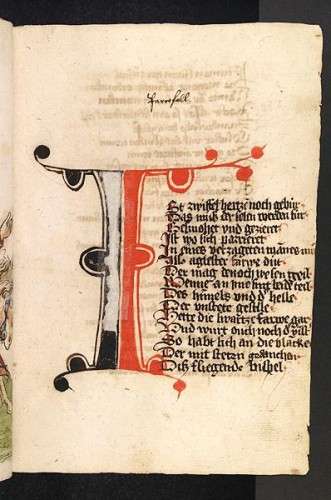
by Wolfram von Eschenbach; Workshop Diebold Lauber in Hagenau [Public Domain], via Wikimedia Commons
Another of our "eternal bestsellers" was created even at the beginning of the 13th century, the Nibelungenlied . This narrative goes back to its origins, except for the migration, a so -called "heroic age" of our history, in which the ancestors received a lot on the face "and therefore needed a lot of hero (heroes). The historical core of the Nibelungen saga are various slaughter during the migration period, which were mixed in the later work.
this heroic epic has been continued orally, the Romans, who had so far been just written, had naturally not so much interest in writing down the heroic deeds of the Germanic tribes, it was now written down for the first time in the still young German written language of Middle High German.
In quality, it differs something from the Parzifal, with which the authors for the first time establish a kind of "modern" narrative culture, the origins are located there in foreign cultures. The Nibelungenlied, on the other hand, passed on “primeval German heroic deeds and therefore later also achieved the status of an important national epic of the Germans.
Among the outstanding works of this period are the Wigalois, an Arthurian romance written by Wirnt von Grafenberg between 1210 and 1220, and the verse novel Willehalm von Orlens, completed around 1240, written by Rudolf von Ems, an important and learned epic poet, which tells the story of the childhood love affair between Willehalm and Amelie, one of the most famous lovers of the Middle Ages, with grace and intimacy.
Finally - the "interpersonal" is discovered
This period also saw the birth of German poetry. With "Hohe Minne ," the stylization of Minne as an ideal and platonic love, expressed through the chivalrous courtship of a lady, Minnesang developed, with the composition of lyrical poems.
The first works of this type of game presented an unadorned author (or author association) "The Von Kürenberg" in the middle of the 12th century, Reinmar the old or Reinmar von Hagenau also gave the first works in the second half of the 12th century.
The masters of this love poetry of the High Middle Ages were Heinrich von Morungen, born around 1220 in Leipzig, whose 35 Minnelieder with 115 verses have been handed down. Walther von der Vogelweide (c. 1170 to 1230) was considered the most important German-language poet of the Middle Ages.
He left behind 90 Minnelieder and 150 hymns in which he artfully evokes the ideal of “level Minne” (flat love), which already goes beyond the adoring, unfulfilled Minne: Here (very modern) a non-status-related, reciprocal and fulfilled love is already assumed, and Walther von der Vogelweide also describes love experiences that take place in the open nature.
However, Walther von der Vogelweide was not limited to the "erotic literature" of the time; he also criticized imperial policy in political writings, some of which used harsh language, such as the "Displeasure" from 1213. Walther von der Vogelweide is arguably the first star writer to be revered as a literary role model even in his time. He was already considered a legend by the literary world of the late Middle Ages.



